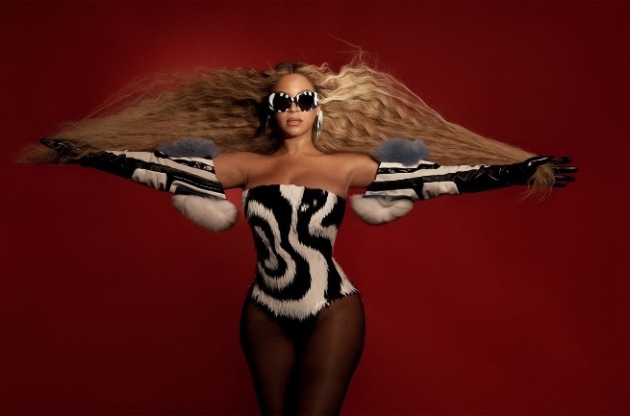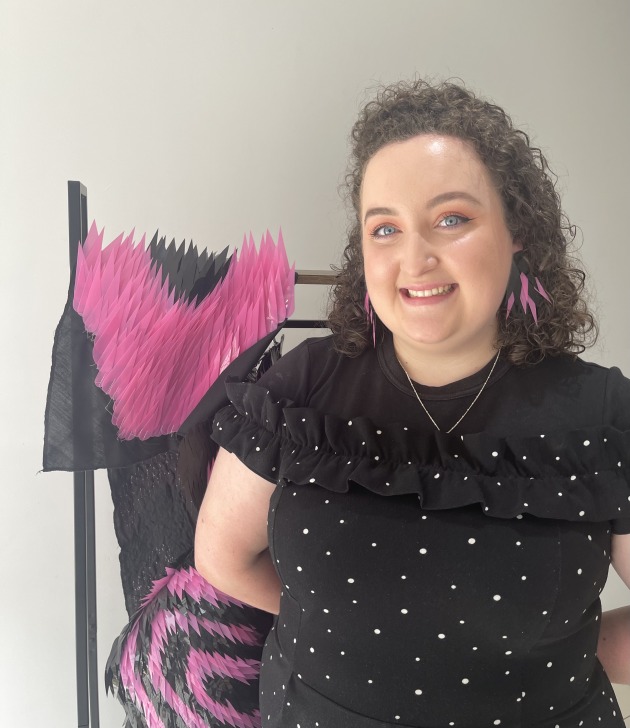LIMELIGHT: BETHANY CORDWELL
Bethany Cordwell is a junior costumier for the Queensland Ballet. She has just hit the jackpot with superstar Beyoncé wearing a design from her latest collection.

What drew you to costume design?
I was always very creative and worked with my hands – whether it was painting, sewing, drawing
or making costumes out of strange materials. I have always been drawn to costume design because of its innate storytelling qualities. While at Qld University of Technology, I loved researching and creating meaning to my work, which I believe designing for costume lets me do. It intrigues me to create costumes that reflect and add to a character or storyline. With ballet costumes in particular, how can you share details of a character without using words? This is why costuming is so important to filling in those gaps for the audience and why I love designing with a purpose.
What was the first costume or outfit you created?
The first outfit I made for myself was a wearable art piece in Grade 7. We were learning about wearable art in school
and were told to create a piece of art that we would wear down a catwalk. I created a wedding dress made from white gathered garbage bags, sewn in a tiered formation, with a fitted bodice and off the shoulder sleeves. I even made a bouquet of yellow and pink flowers complete with green leaves and stems, also made from coloured garbage bags.
What does a costumier do?

I assist with fittings, alter costumes to fit our dancers, sew labels and steam new fabrics and trims to eliminate future shrinkage. I’ve also had the opportunity to be more creative, which I love. Some of these tasks include art-finishing costumes to help age them and add depth as well as bedazzling tutus or sewing on intricate trims. When QB has a show in the theatre, I also help dress dancers or do maintenance backstage. I love being able to see a show from beginning to end – starting with fittings and following the show all the way through to theatre. Since working at Queensland Ballet, I’ve realised there is no job too small. Every task, no matter how insignificant it seems, is actually incredibly important to create a smooth transition from show to show.
What are the major differences between designing costumes and designing fashion?
There are many – particularly, the construction of a costume compared to a ready-to-wear garment. Costumes can have large open seams, which you can let out and take in as required. Ready-to-wear clothing generally has very small seams with no room to let out clothing without adding in a panel.
Costumes help convey a character and enhance storytelling elements, whereas generally fashion follows trends and is sales driven. Costumes are built to last and are constantly repaired. For ballet costumes, hook and bars and poppers are most commonly used as closures instead of zips and Velcro.
Because ballet can include so much partner work and movement, costumes need to fit dancers perfectly so there is no

chance for accidents, issues or injuries as a result of ill fitting costumes. Many hours go into creating beautifully crafted costumes which are made to last and appear as good as new for every performance.
What is the most bizarre costume or costume part you have worked on so far?
My most recent costume, "Documental", is the most bizarre body of work I’ve created to date.
It has been chosen as a finalist for the 2022 World of Wearable Art Competition Awards in New Zealand. "Documental" showcases the creative coping mechanism of repetition through a high fashion lens. This piece took over a year to create and is made from over 55,000 hand-cut scales which have been individually machine-sewn in a hypnotic pattern format.
The most mundane?
Sewing name labels into 50 pairs of socks! Every costume piece that you see on stage has been individually labeled by machine or by hand.
What is the most challenging part of your job?
When I began at Qld Ballet, at first I found it challenging trying to learn 60 dancers’ names while dressing in theatre, let alone building a rapport with them all. Over time, this relationship grew organically and I feel the dancers feel comfortable with me now and trust that I can help them with any costume or dressing issues.
This article first appeared in the Jan/Feb/Mar 2022 issue of Dance Australia. Did you miss it? Subscribe here and have every issue arrive on your doorstep!


